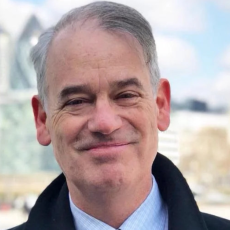Could you give us a brief overview of your current focus at Climate Bonds Initiative, and of the difference between green bonds and climate bonds?
There’s no real difference between the two. When we started, I remember speaking to a sustainability manager of one of the largest American banks, and his expectation was that the green bonds market could reach USD 100 billion, and climate would be a small part of that. I knew he was wrong, it was evident that everything would need to go through a climate filter – and of course the market now is at USD 1.8 trillion. What counts as a green/ climate bond? Think Paris Agreement: from straightforward mitigation all the way to supply chains.
At CBI we have a working group of sector experts from around the world, who convene to clarify what investments are consistent with climate objectives, consult on various ideas and consider feasibility. In this way, rules can be extracted and fed into regulations.
There’s so much investment needed from governments in clean energy, but at the same time they are battling shortages in healthcare, transport etc. Have you been able to sway their attention towards prioritizing investment in green initiatives?
We’ve grown our economies over the last 150 years not with direct government subsidies, but with policy design that mobilizes private capital. There are of course some areas like healthcare that have a higher dependence on direct government funding, but even their private capital can be valuable.
We don’t need governments to borrow money to build wind farms.; we can do this with energy policy designed to ensure that the right kind of investments are made. Governments need to mandate rules, as they have in the past; we just need to focus them on green transition.
Supply chains have been going through a challenging phase, considering recent crises and materials shortages. How do you see investor mentality shifting?
Investors choose specific companies or sectors, not supply chains. In doing so, they need to understand what will work and what won't. They use the Taxonomy as an indicator of relatively low risk because the sectors included there are less likely to be negatively impacted by government policy going forward.

Every institutional investor I speak with believes that change is coming, the shape of the future has been decided; now it's just a matter of the speed of change. Investors are trying to figure out who’s going to prosper and who’s going to go under.
For example, I talk a lot these days about green hydrogen and the drastic drop in prices I see underway; and I get quizzed all the time by major investors that want to know more. Sure, the gas industry will keep making money in the next few years but that will not be the case in 20 years.
The supply chain of minerals is another example (we are starting work soon on a set of guidelines for strategic minerals for the transition). Even with a drastically increased level of circular economy practice, there are unfortunately not enough mineral resources to address the development challenges we face in emerging economies. This means we will need to continue mining metals, in the light of clarity on what requirements must be met from a climate policy perspective.
Technology is rapidly advancing, who is driving growth now, and how does it impact the green transition?
There’s a paper that came out from the IMF recently about the extent to which wealth creation has now become a function not of manufacturing, but of the development of intangible assets. If you look at the growth of the US stock exchange in the past 20 years, the bulk of asset creation has been coming from the likes of Microsoft or Amazon, with balance sheets made up largely of intangible assets. Uber, for example, has no material assets of note. Or look at the luxury goods market – commoditized materials translated into high value products by the application of ideas.
If we’re going to successfully transition our economies we need to look at the nature of wealth creation and job creation. We still mostly think of our economies as being manufacturing or commodity-based, but over the past 40 years global wealth creation has been steadily moving away from the tangible to the intangible. The dematerialization of our economy is well and truly underway.
We are about to drastically increase global levels of urbanization; we expect it to rise from 56% now to 80% by 2050. To avoid this becoming a crisis of vast favelas and slums we need economic and planning strategies that ensure jobs growth in cities that will be able to soak up that movement of peoples.
While the provision of commodities and manufactures will be a useful part of the solution, the sort of wealth that supports things like the universal health and welfare systems that will be so essential to surviving the increased volatility of the 21st centuries era of climate change will depend on a different approach, one based on the application of ideas, processes and intangible value-adding. That will require the features of what are called “creative cities”: education, creative diversity, cultural excitement. Which happens to be what most people like about cities.
Do you have a final message for our audience?
We are in an unusual position in history, because we have more predicting power than ever before. Nothing’s perfect, but we do know that we are headed into a pretty vicious (climate change) storm that’s going to test our capacities. We know the trends, but we must understand the implications for our economies, for our society, for our supply chains. We need to get on top of that because this isn’t a slow burn, it’s a freight train coming down the tracks.
The world is responding to these challenges; in doing that it’s clear that many industries are going to boom in the next decade, from energy storage that will jump past lithium sometime by 2035 to 3D printing allowing vast levels of customization, point of sale manufacturing and resource conservation. It will be ideas that will transform. We are in the middle of a revolution.





